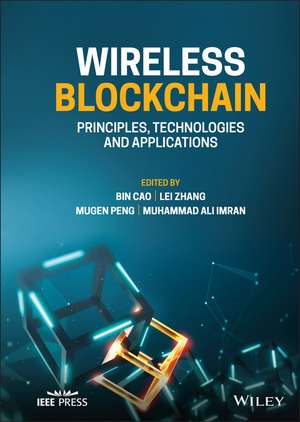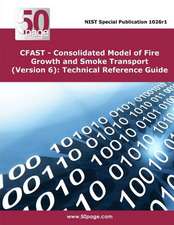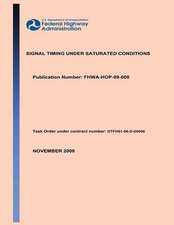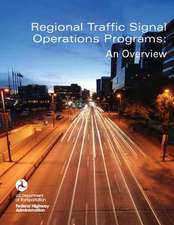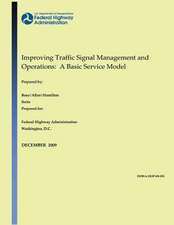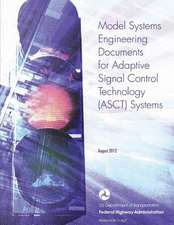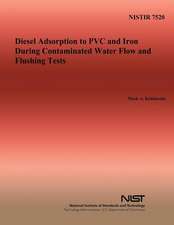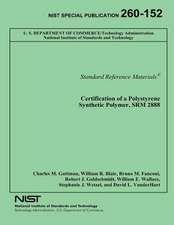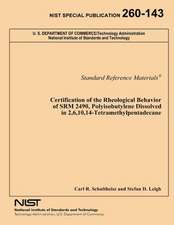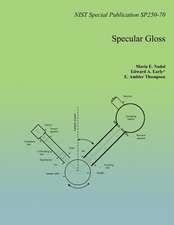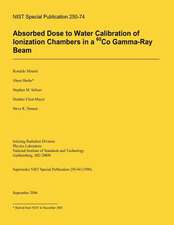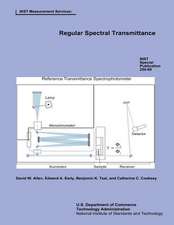Wireless Blockchain – Principles, Technologies and Applications: IEEE Press
Autor B Caoen Limba Engleză Hardback – 24 noi 2021
The book presents the concept of wireless blockchain networks with different network topologies and communication protocols for various commonly used blockchain applications. You'll discover how these variations and how communication networks affect blockchain consensus performance, including scalability, throughput, latency, and security levels.
You'll learn the state-of-the-art in blockchain technology and find insights on how blockchain runs and co-works with existing systems, including 5G, and how blockchain runs as a service to support all vertical sectors efficiently and effectively. Readers will also benefit from the inclusion of:
- A thorough introduction to the Byzantine Generals problem, the fundamental theory of distributed system security and the foundation of blockchain technology
- An overview of advances in blockchain systems, their history, and likely future trends
- Practical discussions of Proof-of-Work systems as well as various Proof-of-"X" alternatives, including Proof-of-Stake, Proof-of-Importance, and Proof-of-Authority
- A concise examination of smart contracts, including trusted transactions, smart contract functions, design processes, and related applications in 5G/B5G
- A treatment of the theoretical relationship between communication networks and blockchain
Din seria IEEE Press
- 5%
 Preț: 599.39 lei
Preț: 599.39 lei - 50%
 Preț: 402.61 lei
Preț: 402.61 lei - 24%
 Preț: 612.64 lei
Preț: 612.64 lei - 24%
 Preț: 707.87 lei
Preț: 707.87 lei - 24%
 Preț: 702.62 lei
Preț: 702.62 lei - 14%
 Preț: 730.94 lei
Preț: 730.94 lei - 24%
 Preț: 546.23 lei
Preț: 546.23 lei - 24%
 Preț: 706.11 lei
Preț: 706.11 lei - 24%
 Preț: 667.14 lei
Preț: 667.14 lei -
 Preț: 517.44 lei
Preț: 517.44 lei -
 Preț: 496.42 lei
Preț: 496.42 lei - 24%
 Preț: 618.96 lei
Preț: 618.96 lei - 24%
 Preț: 617.44 lei
Preț: 617.44 lei - 24%
 Preț: 600.44 lei
Preț: 600.44 lei - 24%
 Preț: 741.52 lei
Preț: 741.52 lei - 20%
 Preț: 446.57 lei
Preț: 446.57 lei - 24%
 Preț: 572.09 lei
Preț: 572.09 lei - 24%
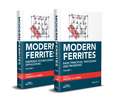 Preț: 1226.90 lei
Preț: 1226.90 lei - 24%
 Preț: 704.87 lei
Preț: 704.87 lei -
 Preț: 1280.69 lei
Preț: 1280.69 lei - 24%
 Preț: 672.03 lei
Preț: 672.03 lei - 24%
 Preț: 695.85 lei
Preț: 695.85 lei - 14%
 Preț: 844.32 lei
Preț: 844.32 lei -
 Preț: 415.98 lei
Preț: 415.98 lei - 9%
 Preț: 993.16 lei
Preț: 993.16 lei - 9%
 Preț: 1474.56 lei
Preț: 1474.56 lei - 9%
 Preț: 792.49 lei
Preț: 792.49 lei - 9%
 Preț: 1098.59 lei
Preț: 1098.59 lei - 20%
 Preț: 711.02 lei
Preț: 711.02 lei - 9%
 Preț: 908.25 lei
Preț: 908.25 lei - 9%
 Preț: 977.26 lei
Preț: 977.26 lei - 9%
 Preț: 947.28 lei
Preț: 947.28 lei - 9%
 Preț: 1936.66 lei
Preț: 1936.66 lei - 9%
 Preț: 1051.42 lei
Preț: 1051.42 lei - 9%
 Preț: 730.37 lei
Preț: 730.37 lei - 9%
 Preț: 1003.99 lei
Preț: 1003.99 lei - 9%
 Preț: 1460.71 lei
Preț: 1460.71 lei - 9%
 Preț: 1003.04 lei
Preț: 1003.04 lei - 9%
 Preț: 914.63 lei
Preț: 914.63 lei - 9%
 Preț: 980.85 lei
Preț: 980.85 lei - 9%
 Preț: 954.18 lei
Preț: 954.18 lei - 9%
 Preț: 767.99 lei
Preț: 767.99 lei - 9%
 Preț: 993.77 lei
Preț: 993.77 lei - 9%
 Preț: 1012.96 lei
Preț: 1012.96 lei - 9%
 Preț: 802.13 lei
Preț: 802.13 lei - 9%
 Preț: 1111.25 lei
Preț: 1111.25 lei - 9%
 Preț: 1534.38 lei
Preț: 1534.38 lei - 9%
 Preț: 1267.53 lei
Preț: 1267.53 lei - 9%
 Preț: 1019.26 lei
Preț: 1019.26 lei - 9%
 Preț: 1111.55 lei
Preț: 1111.55 lei
Preț: 771.37 lei
Preț vechi: 847.67 lei
-9% Nou
Puncte Express: 1157
Preț estimativ în valută:
147.67€ • 151.87$ • 122.51£
147.67€ • 151.87$ • 122.51£
Carte tipărită la comandă
Livrare economică 17 februarie-03 martie
Preluare comenzi: 021 569.72.76
Specificații
ISBN-13: 9781119790808
ISBN-10: 1119790808
Pagini: 336
Dimensiuni: 170 x 251 x 23 mm
Greutate: 0.73 kg
Editura: Wiley
Seria IEEE Press
Locul publicării:Chichester, United Kingdom
ISBN-10: 1119790808
Pagini: 336
Dimensiuni: 170 x 251 x 23 mm
Greutate: 0.73 kg
Editura: Wiley
Seria IEEE Press
Locul publicării:Chichester, United Kingdom
Cuprins
List of Contributors xiii
Preface xvii
Abbreviations xxiii
1 What is Blockchain Radio Access Network? 1
Xintong Ling, Yuwei Le, Jiaheng Wang, Zhi Ding, and Xiqi Gao
1.1 Introduction 1
1.2 What is B-RAN 3
1.2.1 B-RAN Framework 3
1.2.2 Consensus Mechanism 6
1.2.3 Implementation 6
1.3 Mining Model 7
1.3.1 Hash-Based Mining 7
1.3.2 Modeling of Hash Trials 7
1.3.3 Threat Model 10
1.4 B-RAN Queuing Model 10
1.5 Latency Analysis of B-RAN 12
1.5.1 Steady-State Analysis 12
1.5.2 Average Service Latency 16
1.6 Security Considerations 18
1.6.1 Alternative History Attack 18
1.6.2 Probability of a Successful Attack 19
1.7 Latency-Security Trade-off 20
1.8 Conclusions and Future Works 22
1.8.1 Network Effect and Congest Effect 22
1.8.2 Chicken and Eggs 22
1.8.3 Decentralization and Centralization 22
1.8.4 Beyond Bitcoin Blockchain 22
References 23
2 Consensus Algorithm Analysis in Blockchain: PoW and Raft 27
Taotao Wang, Dongyan Huang, and Shengli Zhang
2.1 Introduction 27
2.2 Mining Strategy Analysis for the PoWConsensus-Based Blockchain 30
2.2.1 Blockchain Preliminaries 30
2.2.2 Proof ofWork and Mining 30
2.2.3 Honest Mining Strategy 31
2.2.4 PoW Blockchain Mining Model 32
2.2.4.1 State 33
2.2.4.2 Action 33
2.2.4.3 Transition and Reward 34
2.2.4.4 Objective Function 39
2.2.4.5 Honest Mining 40
2.2.4.6 Selfish Mining 40
2.2.4.7 Lead Stubborn Mining 40
2.2.4.8 Optimal Mining 41
2.2.5 Mining Through RL 41
2.2.5.1 Preliminaries for Original Reinforcement Learning Algorithm 41
2.2.5.2 New Reinforcement Learning Algorithm for Mining 42
2.2.6 Performance Evaluations 44
2.3 Performance Analysis of the Raft Consensus Algorithm 52
2.3.1 Review of Raft Algorithm 52
2.3.2 System Model 53
2.3.3 Network Model 53
2.3.4 Network Split Probability 55
2.3.5 Average Number of Replies 57
2.3.6 Expected Number of Received Heartbeats for a Follower 57
2.3.7 Time to Transition to Candidate 58
2.3.8 Time to Elect a New Leader 59
2.3.9 Simulation Results 60
2.3.10 Discussion 67
2.3.10.1 Extended Model 67
2.3.10.2 System Availability and Consensus Efficiency 68
2.4 Conclusion 69
Appendix A.2 69
References 70
3 A Low Communication Complexity Double-layer PBFT Consensus 73
Chenglin Feng, Wenyu Li, Bowen Yang, Yao Sun, and Lei Zhang
3.1 Introduction 73
3.1.1 PBFT Applied to Blockchain 74
3.1.2 From CFT to BFT 74
3.1.2.1 State Machine Replication 74
3.1.2.2 Primary Copy 75
3.1.2.3 Quorum Voting 75
3.1.3 Byzantine Generals Problem 76
3.1.4 Byzantine Consensus Protocols 76
3.1.4.1 Two-Phase Commit 76
3.1.4.2 View Stamp 76
3.1.4.3 PBFT Protocol 76
3.1.5 Motivations 78
3.1.6 Chapter Organizations 78
3.2 Double-Layer PBFT-Based Protocol 79
3.2.1 Consensus Flow 79
3.2.1.1 The Client 79
3.2.1.2 First-Layer Protocol 81
3.2.1.3 Second-Layer Protocol 81
3.2.2 Faulty Primary Elimination 82
3.2.2.1 Faulty Primary Detection 82
3.2.2.2 View Change 83
3.2.3 Garbage Cleaning 84
3.3 Communication Reduction 84
3.3.1 Operation Synchronization 85
3.3.2 Safety and Liveness 85
3.4 Communication Complexity of Double-Layer PBFT 85
3.5 Security Threshold Analysis 86
3.5.1 Faulty Probability Determined 87
3.5.2 Faulty Number Determined 89
3.6 Conclusion 90
References 90
4 Blockchain-Driven Internet of Things 93
Bin Cao, Weikang Liu, and Mugen Peng
4.1 Introduction 93
4.1.1 Challenges and Issues in IoT 93
4.1.2 Advantages of Blockchain for IoT 94
4.1.3 Integration of IoT and Blockchain 94
4.2 Consensus Mechanism in Blockchain 96
4.2.1 PoW 96
4.2.2 PoS 97
4.2.3 Limitations of PoWand PoS for IoT 98
4.2.3.1 Resource Consumption 98
4.2.3.2 Transaction Fee 98
4.2.3.3 Throughput Limitation 98
4.2.3.4 Confirmation Delay 98
4.2.4 PBFT 98
4.2.5 DAG 100
4.2.5.1 Tangle 101
4.2.5.2 Hashgraph 102
4.3 Applications of Blockchain in IoT 102
4.3.1 Supply Chain 102
4.3.1.1 Introduction 102
4.3.1.2 Modified Blockchain 103
4.3.1.3 Integrated Architecture 104
4.3.1.4 Security Analysis 105
4.3.2 Smart City 106
4.3.2.1 Introduction 106
4.3.2.2 Smart Contract System 107
4.3.2.3 Main Functions of the Framework 109
4.3.2.4 Discussion 110
4.4 Issues and Challenges of Blockchain in IoT 111
4.4.1 Resource Constraints 111
4.4.2 Security Vulnerability 111
4.4.3 Privacy Leakage 112
4.4.4 Incentive Mechanism 112
4.5 Conclusion 112
References 112
5 Hyperledger Blockchain-Based Distributed Marketplaces for 5G Networks 117
Nima Afraz, Marco Ruffini, and Hamed Ahmadi
5.1 Introduction 117
5.2 Marketplaces in Telecommunications 118
5.2.1 Wireless Spectrum Allocation 119
5.2.2 Network Slicing 119
5.2.3 Passive optical networks (PON) Sharing 120
5.2.4 Enterprise Blockchain: Hyperledger Fabric 121
5.2.4.1 Shared Ledger 122
5.2.4.2 Organizations 122
5.2.4.3 Consensus Protocol 122
5.2.4.4 Network Peers 122
5.2.4.5 Smart Contracts (chaincodes) 123
5.2.4.6 Channels 123
5.3 Distributed Resource Sharing Market 123
5.3.1 Market Mechanism (Auction) 125
5.3.2 Preliminaries 125
5.4 Experimental Design and Results 126
5.4.1 Experimental Blockchain Deployment 127
5.4.1.1 Cloud Infrastructure 127
5.4.1.2 Container Orchestration: Docker Swarm 127
5.4.2 Blockchain Performance Evaluation 127
5.4.3 Benchmark Apparatus 128
5.4.3.1 Hyperledger Caliper 130
5.4.3.2 Data Collection: Prometheus Monitor 130
5.4.4 Experimental Results 131
5.4.4.1 Maximum Transaction Throughput 131
5.4.4.2 Block Size 131
5.4.4.3 Network Size 131
5.5 Conclusions 133
References 133
6 Blockchain for Spectrum Management in 6G Networks 137
Asuquo A. Okon, Olusegun S. Sholiyi, Jaafar M. H. Elmirghani, and Kumudu Munasighe
6.1 Introduction 137
6.2 Background 139
6.2.1 Rise of Micro-operators 139
6.2.2 Case for Novel Spectrum Sharing Models 140
6.2.2.1 Blockchain for Spectrum Sharing 141
6.2.2.2 Blockchain in 6G Networks 142
6.3 Architecture of an Integrated SDN and Blockchain Model 143
6.3.1 SDN Platform Design 143
6.3.2 Blockchain Network Layer Design 144
6.3.3 Network Operation and Spectrum Management 146
6.4 Simulation Design 149
6.5 Results and Analysis 152
6.5.1 Radio Access Network and Throughput 152
6.5.2 Blockchain Performance 154
6.5.3 Blockchain Scalability Performance 155
6.6 Conclusion 156
Acknowledgments 156
References 157
7 Integration of MEC and Blockchain 161
Bin Cao, Weikang Liu, and Mugen Peng
7.1 Introduction 161
7.2 Typical Framework 162
7.2.1 Blockchain-Enabled MEC 162
7.2.1.1 Background 162
7.2.1.2 Framework Description 162
7.2.2 MEC-Based Blockchain 164
7.2.2.1 Background 164
7.2.2.2 Framework Description 164
7.3 Use Cases 166
7.3.1 Security Federated Learning via MEC-Enabled Blockchain Network 166
7.3.1.1 Background 166
7.3.1.2 Blockchain-Driven Federated Learning 167
7.3.1.3 Experimental Results 168
7.3.2 Blockchain-Assisted Secure Authentication for Cross-Domain Industrial IoT 170
7.3.2.1 Background 170
7.3.2.2 Blockchain-Driven Cross-Domain Authentication 170
7.3.2.3 Experimental Results 172
7.4 Conclusion 174
References 174
8 Performance Analysis on Wireless Blockchain IoT System 179
Yao Sun, Lei Zhang, Paulo Klaine, Bin Cao, and Muhammad Ali Imran
8.1 Introduction 179
8.2 System Model 181
8.2.1 Blockchain-Enabled IoT Network Model 181
8.2.2 Wireless Communication Model 183
8.3 Performance Analysis in Blockchain-Enabled Wireless IoT Networks 184
8.3.1 Probability Density Function of SINR 185
8.3.2 TDP Transmission Successful Rate 187
8.3.3 Overall Communication Throughput 189
8.4 Optimal FN Deployment 189
8.5 Security Performance Analysis 190
8.5.1 Eclipse Attacks 190
8.5.2 Random Link Attacks 192
8.5.3 Random FN Attacks 192
8.6 Numerical Results and Discussion 192
8.6.1 Simulation Settings 193
8.6.2 Performance Evaluation without Attacks 193
8.7 Chapter Summary 197
References 197
9 Utilizing Blockchain as a Citizen-Utility for Future Smart Grids 201
Samuel Karumba, Volkan Dedeoglu, Ali Dorri, Raja Jurdak, and Salil S. Kanhere
9.1 Introduction 201
9.2 DET Using Citizen-Utilities 204
9.2.1 Prosumer Community Groups 204
9.2.1.1 Microgrids 205
9.2.1.2 Virtual Power Plants (VPP) 206
9.2.1.3 Vehicular Energy Networks (VEN) 206
9.2.2 Demand Side Management 207
9.2.2.1 Energy Efficiency 208
9.2.2.2 Demand Response 209
9.2.2.3 Spinning Reserves 210
9.2.3 Open Research Challenges 211
9.2.3.1 Scalability and IoT Overhead Issues 211
9.2.3.2 Privacy Leakage Issues 212
9.2.3.3 Standardization and Interoperability Issues 212
9.3 Improved Citizen-Utilities 213
9.3.1 Toward Scalable Citizen-Utilities 213
9.3.1.1 Challenges 213
9.3.1.2 HARB Framework-Based Citizen-Utility 214
9.3.2 Toward Privacy-Preserving Citizen-Utilities 216
9.3.2.1 Threat Model 217
9.3.2.2 PDCH System 219
9.4 Conclusions 220
References 221
10 Blockchain-enabled COVID-19 Contact Tracing Solutions 225
Hong Kang, Zaixin Zhang, Junyi Dong, Hao Xu, Paulo Valente Klaine, and Lei Zhang
10.1 Introduction 225
10.2 Preliminaries of BeepTrace 228
10.2.1 Motivation 228
10.2.1.1 Comprehensive Privacy Protection 229
10.2.1.2 Performance is Uncompromising 229
10.2.1.3 Broad Community Participation 229
10.2.1.4 Inclusiveness and Openness 230
10.2.2 Two Implementations are Based on Different Matching Protocols 230
10.3 Modes of BeepTrace 231
10.3.1 BeepTrace-Active 231
10.3.1.1 Active Mode Workflow 231
10.3.1.2 Privacy Protection of BeepTrace-Active 232
10.3.2 BeepTrace-Passive 233
10.3.2.1 Two-Chain Architecture and Workflow 233
10.3.2.2 Privacy Protection in BeepTrace-Passive 235
10.4 Future Opportunity and Conclusions 237
10.4.1 Preliminary Approach 237
10.4.2 Future Directions 238
10.4.2.1 Network Throughput and Scalability 238
10.4.2.2 Technology for Elders and Minors 239
10.4.2.3 Battery Drainage and Storage Optimization 240
10.4.2.4 Social and Economic Aspects 240
10.4.3 Concluding Remarks 240
References 241
11 Blockchain Medical Data Sharing 245
Qi Xia, Jianbin Gao, and Sandro Amofa
11.1 Introduction 245
11.1.1 General Overview 248
11.1.2 Defining Challenges 248
11.1.2.1 Data Security 248
11.1.2.2 Data Privacy 248
11.1.2.3 Source Identity 248
11.1.2.4 Data Utility 249
11.1.2.5 Data Interoperability 249
11.1.2.6 Trust 249
11.1.2.7 Data Provenance 249
11.1.2.8 Authenticity 250
11.1.3 Sharing Paradigms 250
11.1.3.1 Institution-to-Institution Data Sharing 251
11.1.3.2 Patient-to-Institution Data Sharing 256
11.1.3.3 Patient-to-Patient Data Sharing 257
11.1.4 Special Use Cases 260
11.1.4.1 Precision Medicine 261
11.1.4.2 Monetization of Medical Data 263
11.1.4.3 Patient Record Regeneration 264
11.1.5 Conclusion 266
Acknowledgments 266
References 266
12 Decentralized Content Vetting in Social Network with Blockchain 269
Subhasis Thakur and John G. Breslin
12.1 Introduction 269
12.2 Related Literature 270
12.3 Content Propagation Models in Social Network 271
12.4 Content Vetting with Blockchains 273
12.4.1 Overview of the Solution 273
12.4.2 Unidirectional Offline Channel 273
12.4.3 Content Vetting with Blockchains 275
12.5 Optimized Channel Networks 278
12.6 Simulations of Content Propagation 280
12.7 Evaluation with Simulations of Social Network 286
12.8 Conclusion 293
Acknowledgment 293
References 294
Index 297
Notă biografică
Bin Cao, PhD, is an Associate Professor/Researcher in the State Key Laboratory of Network and Switching Technology at Beijing University of Posts and Telecommunications (BUPT). Before that, he was an Associate Professor at Chongqing University of Posts and Telecommunications. He was an international visitor at the Institute for Infocomm Research (I2R), and a research fellow at the National University of Singapore. His research interests include blockchain systems, internet of things, and mobile edge computing.
Lei Zhang, PhD, is a Senior Lecturer at the University of Glasgow, UK. He has 19 patents granted/filed in 30+ countries/regions including US/UK/EU/China/Japan/Singapore. He has published 3 books and over 100 peer-reviewed papers. His research was reported by BBC and Bloomberg. Dr Zhang's research focuses on wireless communications, Blockchain, IoT, data privacy and security.
Mugen Peng, PhD, is the Dean of the School of Information and Communication Engineering, and the Deputy Director of State Key Laboratory of Networking and Switching Technology, Beijing, China. He is now or has been on the Editorial/Associate Editorial Board of the IEEE Communications Magazine, the IEEE Internet of Things Journal, the IEEE Transactions on Vehicular Technology, the IEEE Transactions on Network Science and Engineering, and IEEE Network.
Muhammad Ali Imran is Dean at the University of Glasgow, UK, UESTC and Professor of Communication Systems and Head of Communications Sensing and Imaging Group in the James Watt School of Engineering at the University of Glasgow, UK. He is a Visiting Professor at the University of Surrey and an Adjunct Professor at the University of Oklahoma, US. He has been awarded 15 patents, has authored/co-authored 8 books, over 400 journal and conference publications, and has been PI/Co-I on over £25 million research grants and contracts.
